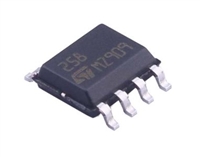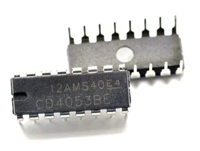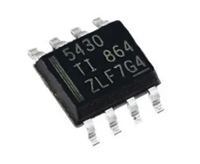ADSP-21364
Preliminary Technical Data
GENERAL DESCRIPTION
The ADSP-21364 SHARC processor is a member of the SIMD
SHARC family of DSPs that feature Analog Devices' Super Har-
vard Architecture. The ADSP-21364 is source code compatible
with the ADSP-2126x, and ADSP-2116x DSPs as well as with
first generation ADSP-2106x SHARC processors in SISD (Sin-
gle-Instruction, Single-Data) mode. The ADSP-21364 is a 32-
bit/40-bit floating-point processor optimized for professional
audio applications with a large on-chip SRAM, multiple internal
buses to eliminate I/O bottlenecks, and an innovative digital
audio interface (DAI).
• On-chip mask-programmable ROM (4M bit)
• 8- or 16-bit parallel port that supports interfaces to off-chip
memory peripherals
• JTAG test access port
The block diagram of the ADSP-21364 on Page 7, illustrates the
following architectural features:
• DMA controller
• Six full duplex serial ports
• Two SPI-compatible interface ports—primary on dedi-
cated pins secondary on DAI pins
As shown in the functional block diagram on Page 1, the
ADSP-21364 uses two computational units to deliver a signifi-
cant performance increase over previous SHARC processors on
a range of signal processing algorithms. Fabricated in a state-of-
the-art, high speed, CMOS process, the ADSP-21364 processor
achieves an instruction cycle time of 3.0 ns at 333 MHz. With its
SIMD computational hardware, the ADSP-21364 can perform 2
GFLOPS running at 333 MHz.
• Digital audio interface that includes two precision clock
generators (PCG), an input data port (IDP), an S/PDIF
receiver/transmitter, eight channels asynchronous sample
rate converters, six serial ports, eight serial interfaces, a 20-
bit parallel input port, 10 interrupts, six flag outputs, six
flag inputs, three timers, and a flexible signal routing unit
(SRU)
Table 1 shows performance benchmarks for the ADSP-21364
running at 333 MHz.
Figure 2 on Page 5 shows one sample configuration of a SPORT
using the precision clock generators to interface with an I2S
ADC and an I2S DAC with a much lower jitter clock than the
serial port would generate itself. Many other SRU configura-
tions are possible.
Table 1. ADSP-21364 Benchmarks
Benchmark Algorithm
Speed
(at 333 MHz)
1024 Point Complex FFT (Radix 4, with reversal) 27.9 µs
ADSP-21364 FAMILY CORE ARCHITECTURE
FIR Filter (per tap)1
1.5 ns
6.0 ns
The ADSP-21364 is code compatible at the assembly level with
the ADSP-2126x, ADSP-21160 and ADSP-21161, and with the
first generation ADSP-2106x SHARC DSPs. The ADSP-21364
shares architectural features with the ADSP-2126x and
ADSP-2116x SIMD SHARC processors, as detailed in the fol-
lowing sections.
IIR Filter (per biquad)1
Matrix Multiply (pipelined)
[3×3] × [3×1]
[4×4] × [4×1]
13.5 ns
23.9 ns
Divide (y/x)
10.5 ns
16.3 ns
Inverse Square Root
SIMD Computational Engine
1 Assumes two files in multichannel SIMD mode
The ADSP-21364 contains two computational processing ele-
ments that operate as a Single-Instruction Multiple-Data
(SIMD) engine. The processing elements are referred to as PEX
and PEY and each contains an ALU, multiplier, shifter, and reg-
ister file. PEX is always active, and PEY may be enabled by
setting the PEYEN mode bit in the MODE1 register. When this
mode is enabled, the same instruction is executed in both pro-
cessing elements, but each processing element operates on
different data. This architecture is efficient at executing math
intensive signal processing algorithms.
The ADSP-21364 continues SHARC’s industry-leading stan-
dards of integration for DSPs, combining a high performance
32-bit DSP core with integrated, on-chip system features.
The block diagram of the ADSP-21364 on Page 1, illustrates the
following architectural features:
• Two processing elements, each of which comprises an
ALU, multiplier, shifter and data register file
• Data Address Generators (DAG1, DAG2)
• Program sequencer with instruction cache
Entering SIMD mode also has an effect on the way data is trans-
ferred between memory and the processing elements. When in
SIMD mode, twice the data bandwidth is required to sustain
computational operation in the processing elements. Because of
this requirement, entering SIMD mode also doubles the band-
width between memory and the processing elements. When
using the DAGs to transfer data in SIMD mode, two data values
are transferred with each access of memory or the register file.
• PM and DM buses capable of supporting four 32-bit data
transfers between memory and the core at every core pro-
cessor cycle
• Three programmable interval timers with PWM Genera-
tion, PWM capture/pulse width measurement, and
external event counter capabilities
• On-chip SRAM (3M bit)
Rev. PrD
|
Page 4 of 56
|
May 2005






 MAX6675资料手册参数详解、引脚配置说明
MAX6675资料手册参数详解、引脚配置说明

 LM258引脚图及功能介绍、主要参数分析
LM258引脚图及功能介绍、主要参数分析

 CD4052资料手册参数详解、引脚配置说明
CD4052资料手册参数详解、引脚配置说明

 一文带你了解TPS5430资料手册分析:参数介绍、引脚配置说明
一文带你了解TPS5430资料手册分析:参数介绍、引脚配置说明
